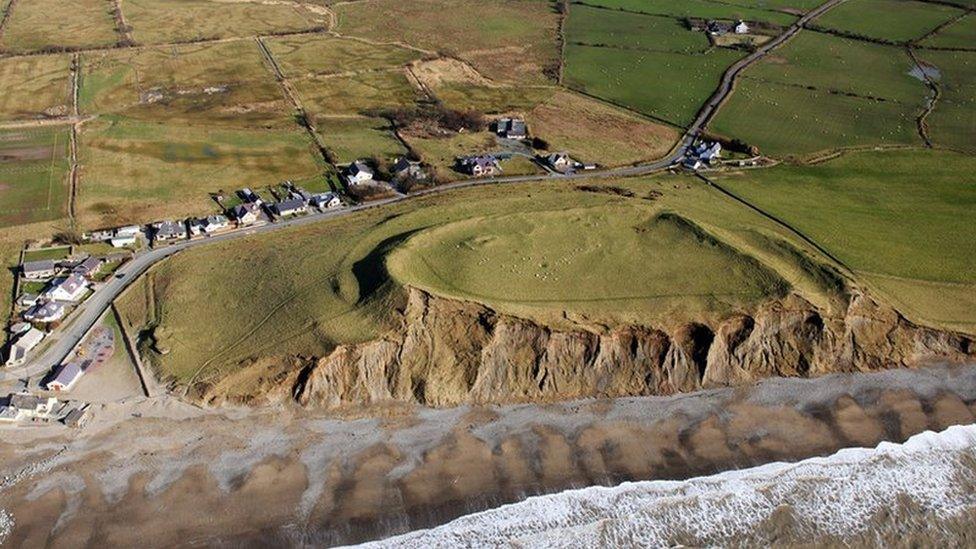Archaeology dig at Caernarfon Castle offers new history insight
- Published
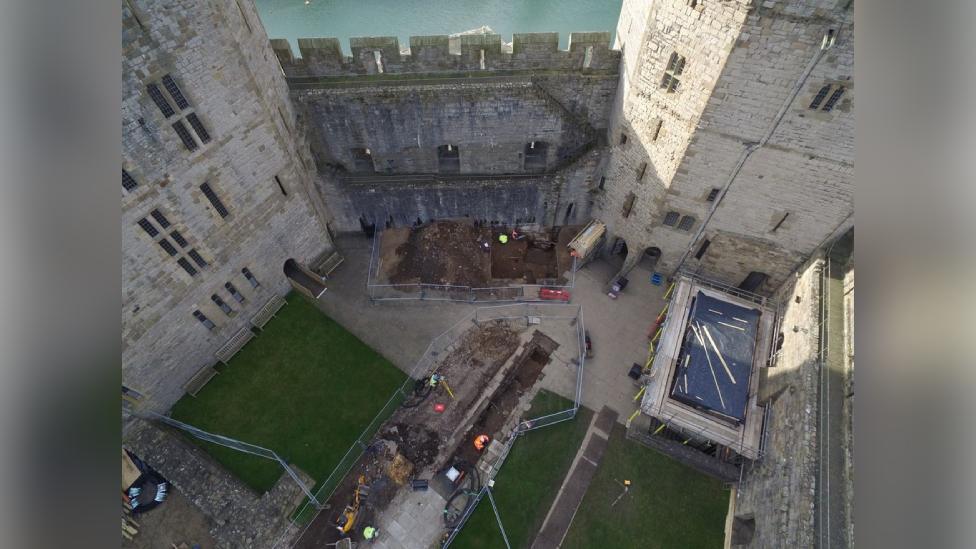
The year-long dig began in January 2019
The largest archaeological investigation at Caernarfon Castle has uncovered clues that will change understanding of the World Heritage Site's early history, experts say.
Among the excavation's finds included sherds of 1st century Roman pottery along with tiles and animal bone.
Researchers also uncovered clues to the history of the site before the castle.
Ian Miller, from University of Salford, said it has a "huge impact on the way we understand the history of the site".
The castle, which staged the investiture of Prince Charles in 1969, was built by Edward I in 1283 on the site of what was once thought to be a Roman fort.
Along with the pieces from the Roman era, stone foundations may indicate the use of the site before its current structure was built, adding to the suggestion there had been a Norman motte and bailey fortification.
A re-interpretation of the markings currently laid out at the castle's lower ward, indicate where original buildings would have stood during the 13th or 14th century, providing a clearer picture of the site's historical timeline.
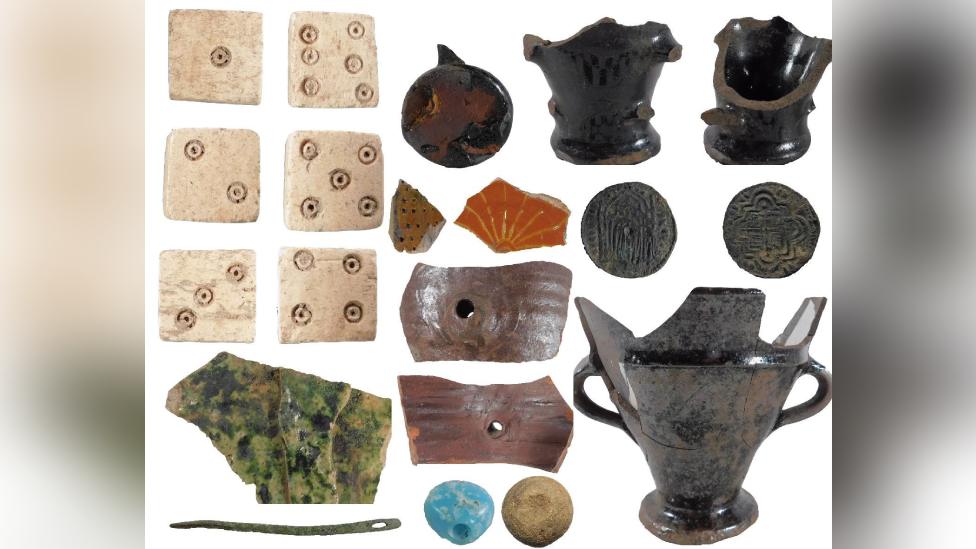
The project had unearthed some "very significant clues" as to how the site was used prior to the castle
The data will be examined by Salford University to determine what the discoveries say about the history of "one of the UK's most important heritage sites".
Mr Miller, Director of Salford Archaeology, said: "This will have a huge impact on the way we understand the history and development of this iconic site.
"We've discovered tantalising evidence of Roman settlers dating back as far as the 1st century, suggesting that the site of Caernarfon Castle was of huge strategic significance long before a castle was built in 1283.
"This once-in-a-lifetime project has yielded some very significant clues as to the use of the site immediately prior to the construction of the castle, and an insight into how this incredible building developed during the late 13th and 14th centuries."
He added: "We will gain a far greater understanding of the historical development of the site. We may not rewrite the history of Caernarfon Castle, but we will certainly enhance it."
Ian Halfpenney, Inspector of Ancient Monuments at Cadw, said: "It is very rare indeed to see an excavation on this scale within a World Heritage Site, and the results will undoubtedly shed further light on the use and development of the Castle site.
"The scale of the work at Caernarfon Castle has provided an unprecedented opportunity to undertake a major excavation within the Lower Ward, and to create a comprehensive digital record via 3D laser scanning of the whole area.
"This laser model will not only aid our understanding of the Castle's history, but it will also inform the subsequent conservation works and provide a permanent digital record of the King's Gate — for the public to enjoy. "

'WE ARE FAMILY: THE GENERATION GAME': Why are more young people deciding to live with their parents?
CHECK OUT THE LATEST SERIES OF FOILED: Bleach for the Stars is thriving under new management

- Published30 September 2019
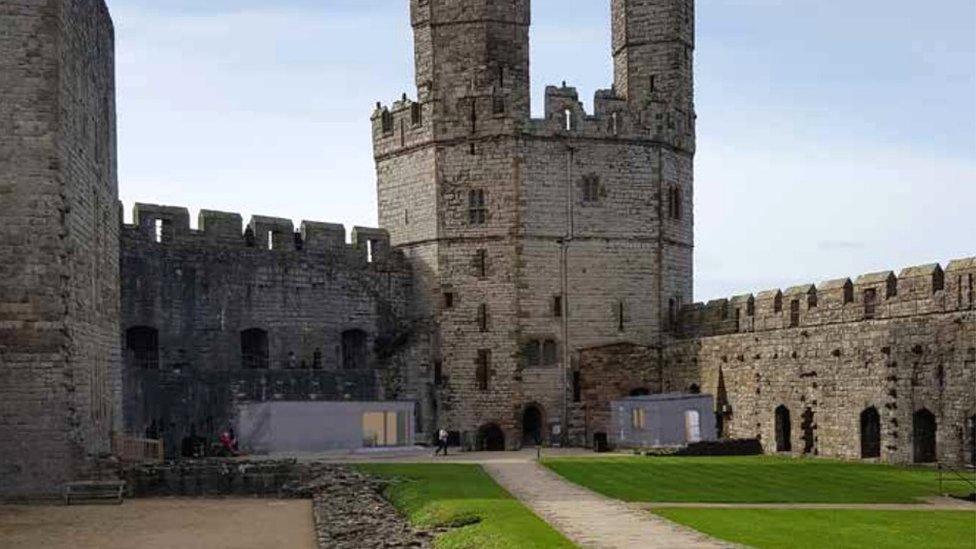
- Published9 September 2020
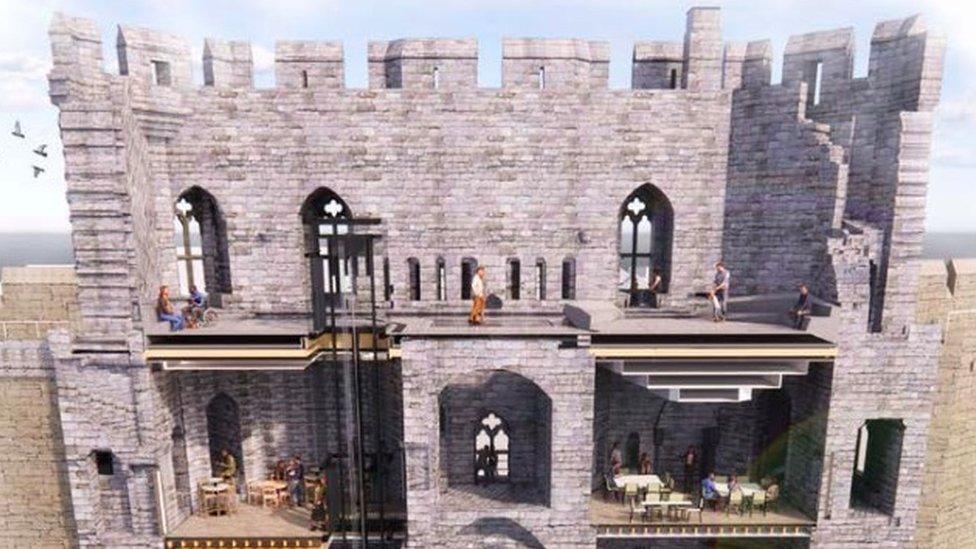
- Published20 August 2019
